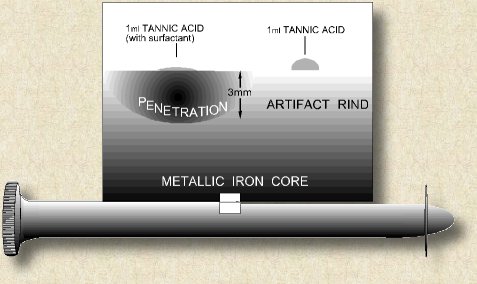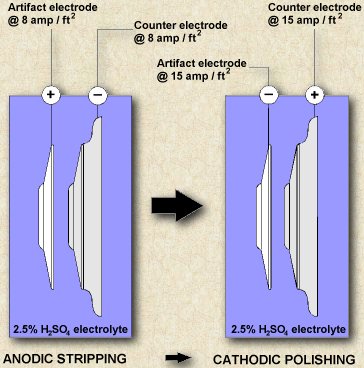 |
|
|
ACID PENETRATION |
| What do treating your dog for fleas and conserving a 2-ton iron cannon have in common? The need to increase the treatment penetration. Our lab has developed an additive for tannic acid treatment to achieve better penetration. We do not use it on our pets, though. |
 |
|
STRIP AND POLISH |
|
|
|
Pewter recovered from marine sites is difficult to treat because it is an alloy of two metals that react quite differently to the salt water environment. The higher the quality of the pewter—that is, the less lead it contains—the more difficult it is to treat.Through tightly controlled experiments, our lab has refined the technique of electrolytic reduction conservation treatment for pewter. |
|
CONSERVE AND RECYCLE
|
|
| A huge amount of fresh water and chemicals are consumed by the electrolytic treatment of artifacts. Our lab addressed this problem by developing a technique (using Amberlite ion exchange resin donated by Rohm and Hass Company) to extract chlorides from used electrolyte. The liquid can now be reused and recycled endlessly, saving both money and resources. |  |
Ships | Exploration | Discovery | Research | Our Mission
Headquarters | Exhibits | Turks and Caicos Museum | About Us | Our Network | Contributors | Underwater Links | Our Publications
Shipwreck Excavations | Columbus's Lost Ships | Archival Documents | Conservation | Ancient Techniques | Replicas
Experimental Archaeology

